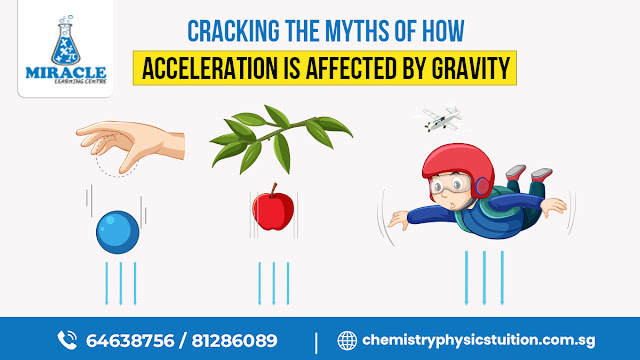Gravity, the invisible force that binds our universe together, is a phenomenon that has intrigued scientists and thinkers for centuries. At the heart of gravity lies the concept of acceleration due to gravity, a fundamental force that governs the motion of objects on Earth. In this post, we will explore the intricacies of acceleration due to gravity, shedding light on its importance and providing simple derivations to demystify this crucial aspect of physics. For students eager to master these concepts, the guidance of the best physics tuition can prove invaluable in navigating the complexities of gravitational forces.
Gravity's Grasp
Gravity is the force that pulls objects towards the center of the Earth. Every object with mass experiences this force, and the acceleration due to gravity is what determines the rate at which objects fall. On the surface of the Earth, this acceleration is approximately 9.8 meters per second squared (m/s²). This value is represented by the symbol 'g' and is a constant for all objects, regardless of their mass.
Derivation of Acceleration due to Gravity
The acceleration due to gravity, denoted as 'g,' can be derived from Newton's law of universal gravitation. This law states that every point mass attracts every other point mass in the universe with a force that is directly proportional to the product of their masses and inversely proportional to the square of the distance between their centers.
The formula for Newton's law of universal gravitation is given by:
F = G.m1.m2r2
Where:
F is the gravitational force between two objects,
G is the gravitational constant (6.674×10−11 N⋅m2/kg2),
m1 and m2 are the masses of the two objects,
r is the distance between the centers of the masses.
Now, to find the acceleration due to gravity, we consider the force acting on an object of mass m near the Earth's surface. The force F is the weight of the object, given by F=m⋅g, where
g is the acceleration due to gravity.
Equating the gravitational force to the weight, we have:
m.g = G.m. MEarthREarth2
Simplifying, we find:
g = G. MEarthREarth2
Where:
MEarth is the mass of the Earth.
REarth is the radius of the Earth.
Plugging in the known values for G, MEarth, and REarth, we get the familiar value for g on the surface of the Earth, approximately 9.8 m/s2.
Acceleration in Free Fall
When an object falls freely under the influence of gravity, it experiences constant acceleration. This is a special case known as free fall. The acceleration due to gravity causes objects to fall at the same rate, regardless of their masses. In the absence of air resistance, all objects near the Earth's surface fall with an acceleration of 9.8 m/s2. This uniform acceleration simplifies the equations of motion for free-falling objects.
The equation of motion for an object in free fall from rest is given by:
h = 12gt2
Where:
h is the height from which the object falls,
g is the acceleration due to gravity,
t is the time of free fall.
This equation illustrates how the height of the fall is directly proportional to the square of the time of free fall, emphasizing the consistent acceleration experienced by the object.
Practical Implications
Understanding acceleration due to gravity has significant implications in various fields. In physics, it forms the basis for analyzing the motion of objects, from simple free fall to complex projectile motion. Engineers rely on this knowledge when designing structures, ensuring they can withstand the gravitational forces acting upon them. Additionally, astronomers use the concept of gravity to study the motion of celestial bodies, predicting their orbits and interactions.
The Role of Best Physics Tuition
For many students, grasping the intricacies of acceleration due to gravity can be challenging. This is where the importance of quality physics tuition comes into play. The best physics tuition provides students with a solid foundation, guiding them through the principles, derivations, and applications of gravity-related concepts. Through interactive sessions and expert guidance, students can gain a deeper understanding of acceleration due to gravity and its role in shaping the physical world.
Conclusion
Acceleration due to gravity is a fundamental concept that transcends the boundaries of the classroom and extends into our daily experiences. Whether we are dropping a pen or sending a satellite into orbit, the principles of gravity and acceleration due to gravity are at play. For those aiming to excel in physics, seeking out quality physics tuition, can make a significant difference in mastering these foundational concepts. As we continue to explore the mysteries of the universe, a solid understanding of acceleration due to gravity remains a key building block in the fascinating world of physics. Physics tuition serves as a guiding light, illuminating the path to a deeper comprehension of these essential principles. Join Now!
Related Articles :
https://studygroups786.blogspot.com/2023/12/exploring-fundamental-principles-and.html



